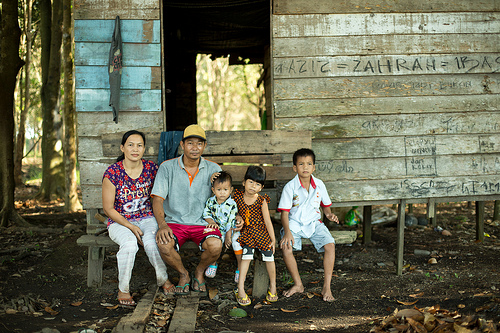The Green Climate Fund (GCF) recently adopted two new decisions intended to reduce global emissions from deforestation and forest degradation, as well as to support forest restoration and conservation in developing countries via REDD+.
These two new decisions relate to:
- The GCF’s role in financing development of policies and preparatory activities in developing countries; and
- The GCF’s policy related to making payments for verified emission reductions achieved through such policies and measures.
CONTEXT OF THE GCF
It has been a long trek to get to this point at the international level. The work on REDD+ started as early as 2005, and the international framework was finalized between 2013 and 2015. The UN Climate Convention Standing Committee on Finance has more recently been undertaking work to move the finance discussion forward since 2014 and much groundwork has been done through initiatives led by the World Bank, UNDP, UNEP and the FAO, such as the Forest Carbon Partnership Facility and the UN-REDD Programme.
Since efforts to curb forest loss and restore and conserve forests commenced through REDD+, there has been more than USD $6 billion provided to countries across Asia, Africa and Central and South America- mostly on behalf of the governments of Norway, Germany, the U.K. and the U.S. Now, more funding (likely several hundreds of millions of USD), is expected to come from the GCF.
However, despite all these efforts, only one country- Brazil- has been able to show a decrease in deforestation. But this trend has been reversed with a recent growth in deforestation. The complexities associated with REDD+ and its lack of emissions reductions results has thus caused many to question the potential for the framework to mitigate climate change.
Attempts to achieve these objectives by relying on private sector finance and carbon markets (negligible to non-existent) have been marred with controversy associated with on the ground realities of rights of indigenous peoples and local communities. These tensions remain, with deep divides persisting on topics such as carbon markets, offsets, lack of respect for indigenous rights, and continued uncertainty related to land tenure in many countries.
Despite this, slowing, halting and reversing forest cover and carbon loss remains a global priority. The UN Sustainable Development Goal 15 seeks to achieve this by 2020. Reducing emissions from deforestation and forest degradation, and restoring and conserving forests was also identified as a priority action in the Paris Agreement.
The global community is well-aware of the importance of forests to the climate change agenda, and heavy reliance is being placed on forest and land use to achieve the goals outlined by the Paris Agreement.
GCF RELATING TO EARLY PHASES OF REDD+
The first decision made at the recent 17th Meeting of the GCF Board in Songdo, Korea, addressed the type of support to be provided by the GCF to enact the enabling conditions, policies and measures required to support Phases 1 and 2 of REDD+.
The multi-billion dollar fund will support countries to develop strategies and action plans, reference levels to measure emissions, forest monitoring systems and safeguard systems, as well as land tenure reform, and will put emphasis on issues related to gender, indigenous peoples rights and environmental integrity.
The GCF intends to makes it a priority to enhance countries’ capacities to safeguard the rights of local and indigenous communities and to seek strict adherence to social and environmental safeguards.
The GCF says it will ensure relevant stakeholders and civil society groups are consulted, with particular attention paid to the rights of indigenous peoples. It will focus on investments that build local and long-lasting capacities and stakeholder engagement processes.
The GCF will support projects and programs, which target the following:
- Previously forested lands: to reduce pressure on forests by increasing productivity of agricultural lands through more efficient and proven technologies, reforestation and agroforestry and restoration of natural forests;
- Managed forests: targeting forests in proximity to the agricultural frontier. This may come in the form of sustainable forest management for timber or non‐timber forest products, payments for ecosystem services, and ecotourism; and
- Primary forests: recognizing land tenure rights, strengthening law enforcement measures, creating large‐scale protected areas, maintaining the livelihoods and cultural values of forest‐dependent people and long‐term conservation of these forests and the ecosystem services they provide.
The decision also identifies that the GCF will engage with the private sector through its Private Sector Facility. Through this facility, the GCF considers that it may provide support by:
- Providing funding and instruments to generate credit lines with improved loan conditions for sustainable agricultural practices conditional to maintaining natural forests and/or increasing forest areas;
- Financing technical assistance to small‐scale farmers to improve capacities and generate opportunities to engage in deforestation‐free supply chains; and
- Providing guarantees to reduce market risks, and other risks inherent to the forestry and land use sectors, including climate variability.
At this point in time, the GCF’s approach to engagement with the private sector is still in its infancy. Work will commence in the coming months to further develop a policy on the way in which the Fund interacts with the private sector, likely including the topic of trading in forest carbon.
Tosi Mpanu Mpanu of the Democratic Republic of the Congo (DRC), a leading Board Member working on this issue, underscored the intention of the GCF to become a global leader on this topic. It was emphasized by Mpanu Mpanu and other Board members that funding should not be limited to just a few countries, but to all the countries that require support to achieve emissions reductions from forests.
Germany’s Board Member Karsten Sachs emphasized the need to ensure clarity on the comparative advantage of the GCF over other funds proving finance on the same subject. He elaborated that further work needs to be done on the cohesion and complementarity with initiatives such as the FCPF and UN-REDD. Sachs also emphasized the importance of support for work by Germany and the importance of strengthening the role of the private sector, including through supply chain management.
The decision was welcomed by representatives of indigenous peoples, who reinforced that land rights are the basis of success for interventions of this type. They emphasized the need to ensure prevention of risks arising from implementation and their desire to see support from the GCF in strengthening land rights.
PAYMENTS FOR FOREST EMISSIONS REDUCTIONS
The second decision was on the topic related to payment for results – meaning verified emissions reductions achieved by following the processes set out by the UNFCCC Framework related to REDD+. The decision was entitled, “Pilot Program for REDD+ Results Based Payments”.
This was a more technical decision than the previous one, and one in which the GCF Board members ensured their UNFCCC expert negotiators were present to provide consul on (including the U.S., Norway, Malaysia and Brazil).
The results-based payments decision contained the following aspects as the “Key Procedural and technical elements”:
a) Access modality: requests would be channeled through accredited entities of the GCF, albeit acting in a more limited role.
b) Financial valuation of results: proposed a uniform and fixed price of USD $5 per ton CO2 eq. for the pilot program.
c) Size of the Request For Payments (RFP): proposed allocating between USD $300 million and USD $500 million for the pilot program. It was noted that as of June 2017, 25 countries have completed their reference levels, and the Technical Analysis by the UNFCCC and four countries have submitted REDD+ results to the UNFCCC Secretariat with a potential volume of emissions reductions from countries ranging between 600 and 2500 million tonnes of CO2 eq. over the last two to four years.
d) Double payment and double financing: considered by the GCF Secretariat to be where a country receives both support for activities pertaining to Phases 1 and 2 of REDD+, and payments for the results achieved during the same periods in Phase 3, proposing that this can be managed through appropriate control policies (i.e. registry systems).
e) Use of proceeds: Proposed that countries receiving REDD+ results-based payments (RBPs) should reinvest the proceeds in activities in line with countries’ Nationally Determined Contributions (NDCs).
f) Ownership, legal title and implications on NDCs: the emissions reductions paid for by the GCF under the pilot program are proposed not to be transferred to the GCF and should be retired. In other words, it’s a ‘non market’ approach.
g) Eligibility date for results and length of the RFP: Concerns the eligibility date of results (past or future) for payments. The Secretariat suggested the pilot only consider recent ex-post results. The length of the entire process could take up to two years (from the launch of the request for payments to the distribution of payments).
h) Scale of implementation: proposals should be designed to achieve tons of emissions reductions or enhanced removals at national, or in the interim, sub-national level.
i) Forest reference emission levels / Forest reference levels (FREL/FRL) and results: The GCF proposes to employ a scorecard to create a bridge from UNFCCC Technical Analysis processes to GCF RBP payments.
j) Operationalization of the Cancun safeguards: Noting differences between the Cancun safeguards and the GCF environmental and social standards, countries applying for results-based payments will have the primary responsibility of demonstrating how the Cancun safeguards have been addressed and respected in the implementation of the REDD+ activities through their Summary of Information. The AEs, working with the countries, will prepare and document an assessment describing how the GCF interim standards have been met and applied in the REDD+ activities. Again, a scorecard will play an important role.
The Secretariat identified the need to better understand the size of the pilot, the eligibility date, the distribution of payments, and the application of the scorecard.
The Board members approached the issue with caution, recognizing the complexities, sensitivities and history of international negotiations on the topic.
Caroline Leclerc of Canada, one of the champions leading the process, mentioned the complexities and the inter-linkages of topics, as well as the fact that the Board is not in a place to fully agree on all the parts of the proposed decision.
Mpanu Mpanu mentioned that the price may be a complicated issue as it costs many countries more per ton than USD $5 to reduce emissions through the forest and land use sector.
The Board members commenced putting forward different positions, making it clear that there was not going to be agreement on many issues. Diverse positions and concerns arose on various topics including: eligibility dates, transfer, the size of the GCF envelope, price, double financing, assessment, and the content of the scorecard.
NEXT STEPS
Following a full day of consultations and closed room negotiations, the Board finally took note of the progress made. It asked the Secretariat to undertake further analysis to finalize the draft request for further consideration on proposals at the 18th Meeting of the Board, which will be held in Cairo, Egypt this September.
The GCF approach to forests, on paper at least, seems encouraging in many ways. This major global fund is seeking, at this point in time, to look beyond merely economic incentives such as markets and carbon trading to holistic landscape and cross-sectoral approaches with broad stakeholder engagement. The fund seems to embrace both market and non-market approaches.
Although these decisions are about REDD+ specifically, the GCF is making efforts to look beyond the limitations associated with the current REDD+ framework concerning matters such as addressing drivers of deforestation.
It is also seeking to enhance respect for rights. In recent years, there has been a significant improvement of the Fund’s approach to indigenous peoples’ rights. This is reflected in the recent decisions taken and the ongoing work related to a standalone indigenous peoples policy expected to be put forth at the next Board meeting.
It is also noteworthy that the GCF is progressively laying the groundwork to engage in more depth on carbon trading-related interventions, which will no doubt in due course give rise to increasing controversy and potential for reputational risk to the fund.
The proof, however, will be in the project approval, implementation, monitoring and evaluation. The GCF is still on a learning curve when it comes to project implementation, with 43 projects now approved and valued at around USD $2 billion.
Very little funding has started to flow and getting money out the door has been challenging. Projects approved by the GCF have come under some criticism for lacking consultations with stakeholders, and the Fund will need to ensure that these issues do not reoccur as it moves further into the realm of forests and landscapes.
We want you to share Forests News content, which is licensed under Creative Commons Attribution-NonCommercial-ShareAlike 4.0 International (CC BY-NC-SA 4.0). This means you are free to redistribute our material for non-commercial purposes. All we ask is that you give Forests News appropriate credit and link to the original Forests News content, indicate if changes were made, and distribute your contributions under the same Creative Commons license. You must notify Forests News if you repost, reprint or reuse our materials by contacting forestsnews@cifor-icraf.org.



